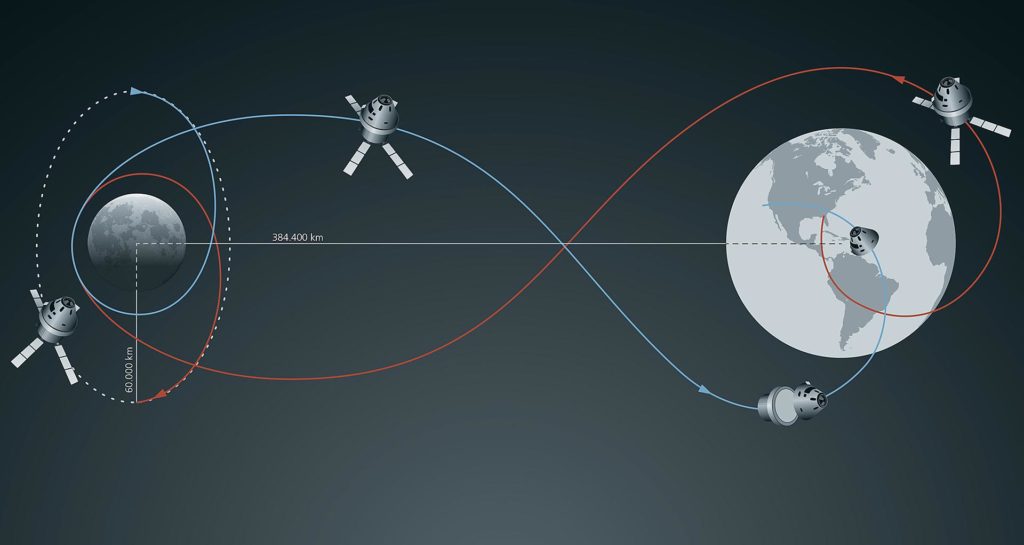Return to the Moon with German expertise
Under the leadership of the US space agency NASA, the Artemis programme is intended to be the next great leap forward in western spaceflight. Following the uncrewed Artemis I mission and a crewed test flight around the Moon, Artemis III is expected to land humans on the lunar surface in around 2025. The European Service Module (ESM) will play a vital role and marks a significant advance for European spaceflight and German space technology in particular. The Artemis space transport system, known as Orion or the Multi-Purpose Crew Vehicle, consists of two main parts – the US Crew Module and the cylindrical ESM containing the primary engine for the flight to the Moon. Four solar panels supply the spacecraft with power. The ESM climate control systems ensure that the temperature is optimally regulated for the astronauts and the cargo. Fuel, oxygen and water supplies for the crew are also stored in the ESM. When fully loaded, it weighs approximately 13 tonnes at launch. The ESM delivers the Orion capsule into orbit around the Moon. It only separates from Orion at the end of the mission, before burning up in Earth’s atmosphere.
With Artemis, NASA is collaborating with international partners on a critical component of a crewed space mission for the first time. This is a significant vote of confidence in the capabilities of European spacefaring nations. A European industrial consortium, led by Airbus Defence and Space in Bremen and spread across 10 countries, has now implemented the first flight unit – ESM-1. To date, NASA has ordered six European service modules as part of its Artemis programme. Germany is the primary European partner of the other spacefaring nations involved in the International Space Station ISS (USA, Russia, Japan and Canada) and was a major supporter of the decision to build the ESM, which was taken at the ESA Council at Ministerial Level in Naples in 2012. The German share of the ESM programme is approximately 50 percent and is this managed by the German Space Agency at DLR.
Link:
German Aerospace Center (DLR)
Johannes Weppler · Email Johannes.Weppler@dlr.de
Orion’s journey to the Moon. On its first journey to Earth’s natural satellite, Orion – powered by ESM-1 ‘Bremen’ – will be uncrewed. The spacecraft is to orbit the Moon several times before returning to Earth. Only on the second mission will astronauts travel in the capsule to the Moon and orbit it. Under the Artemis programme, NASA aims to send a woman to the Moon for the first time. Credit: German Space Agency at DLR
Space technology ‘Made in Germany‘ – the European Service Module of the Orion spacecraft
